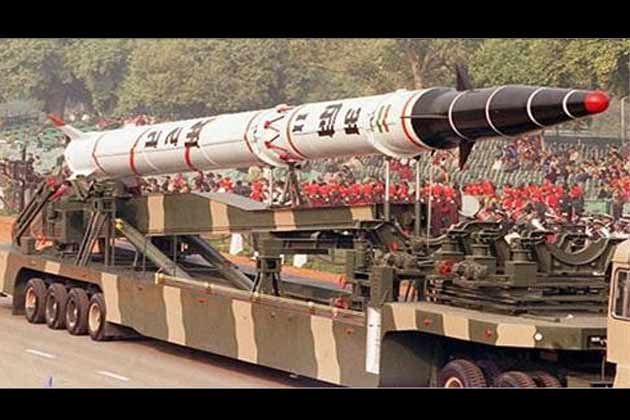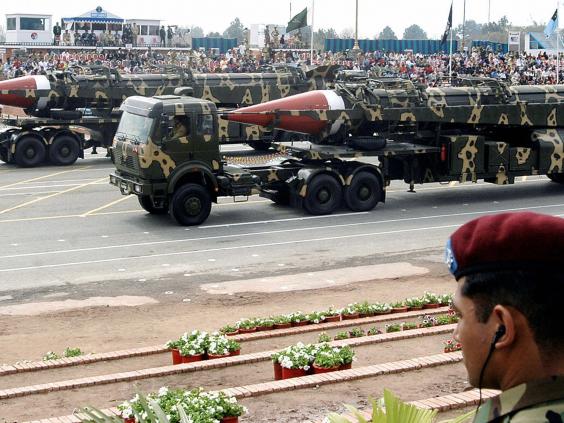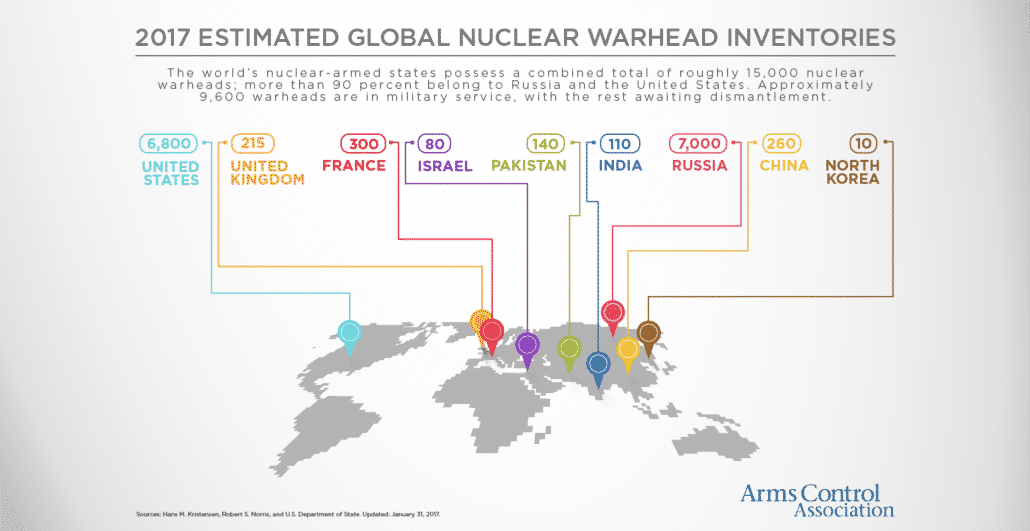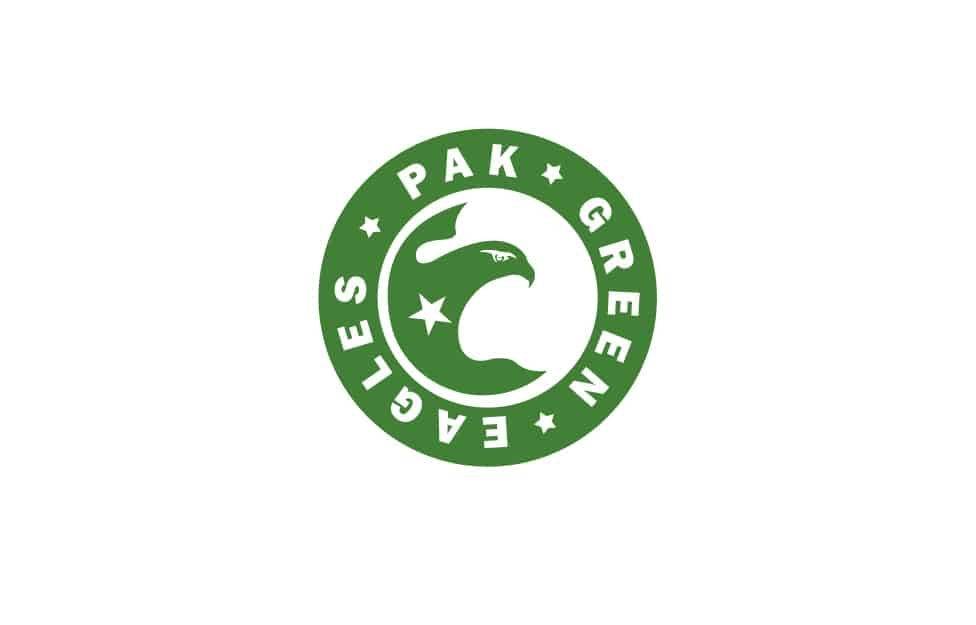
Does the capability to produce weapons of mass destruction ensure peace? No
Does this capability ensure security? Yes
Well! At least it holds true in case of Pakistan and India – Two neighboring countries yet two arch rivals. The world is well aware of the antagonism between the two but amazingly none of the peace promoting countries or agencies contributed to resolve the disputes between the two. As a result, Pakistan and India indulge in what they know the best, that is; commencement and development of arm race. And the recent addition to this race is nuclear weapons.
Since independence India has rapidly progressed both financially and in terms of military strength. India officially tested their nuclear capabilities in 1974, which led to many sanctions as they have repeatedly refused to sign non-proliferation treaty. But that never stopped their dream and ambition to become a world power. These endeavors lead Pakistan to start their own nuclear program with their first nuclear test in 1998, although Pakistan faced much harsher sanctions. One factor that eased the restrictions was the signing of NPT which India hasn’t signed and still carried out their mission. Without being the member of any such treaty, India is allowed to do nuclear materials exports. Such moves clearly demonstrate the level of trust and importance given to India in this region.

Years ago Nehru had already predicted the line of direction that India has to follow saying: “As long as the world is constituted as it is, every country will have to devise and use the latest devices for its protection”.
When Pak-India nuclear comparison is carried out, the first question is always who is responsible for the stability or instability of power in the region? Is it India, Pakistan or China?
Well! China is very clear about it objectives. So the debate is actually limited to Pakistan and India.
Zachary Keck argued in one of his article, “Indian leaders built the bomb with a very specific security threat in mind. Unfortunately, nuclear weapons have proven ill-suited for addressing that security threat, while India’s pursuit of atomic weaponry has opened up new challenges that wouldn’t have existed otherwise.”
Clearly these ‘challenges’ are summed up in the arduous pursuit of development of nuclear technology by Pakistan.

Pakistan Nuclear Weapons
India and Pakistan Nuclear Weapons Comparison
Pakistan has 120 and India has 110 nuclear weapons. It obviously shows which country has more nuclear capability but that does not determine the overall index of progress at all.
Close studies shows the extensive nature of Indian Nuclear capabilities:
- India, China, the US and Russia are the only countries with extensive sea, air and land capabilities.
- Multiple nuclear capability aircrafts including: the Dassault Mirage 2000, Sukhoi Su-30MKI, the Mikoyan MiG-29.
- Nuclear submarines (limited range submarine-launched ballistic missiles)
- A wide range of missile arsenal (working to acquire intercontinental ballistic missiles.
On the other hand, nuclear capabilities possessed by Pakistan might not be compatible with India but steadily Pakistan is developing in this field. At the moment Pakistan is equipped with following nuclear armament features:
- The delivery system is limited to aircraft bombs and ballistic missiles(that is land and air which soon will be changed as the work is under process to acquire submarine form China)
- F-16 and JF-17 planes are the carriers
- Short and medium range missiles
- Development of tactical battlefield weapons
- 1st and 2nd strike capabilities
- Pakistan have developed its own 3rd strike capability in Submarine form load with nuclear missile
Nuclear Weapons List
| Pakistan Nuclear Weapons List
Nuclear Tests: Chaghi I Chaghi II |
Indian Nuclear Weapons List
Nuclear Tests: Smiling Budha Operation Shakti |
| Missiles:
· Abdali I (BRBM) · Ghaznavi (SRBM) · Ghauri (MRBM) · Ghauri-II (MRBM) · Ghauri-III close (IRBM) · Hatf-I/IA (BRBM) · Shaheen (MRBM) · Shaheen-II (IRBM) · Shaheen-III (IRBM) Cruise Missiles: · Babur · Ra’ad (air launch) · Nasr
Source: Wikipedia |
Missiles:
· Agni I · Agni II · Agni III · Agni IV · Agni V · Prithvi I · Prithvi II · Prithvi III · Shaurya · K-4 · K-5 · K-15 Sagarika Cruise Missiles · Brahmos · Nirbhay · P-70 Ametist · P-270 Moskit · Popeye |
It is difficult to say which has more Nuclear power – India or Pakistan? Tactically, nuclear weapons on both sides are considered a shield against each other’s aggression, although India has to counter the threat from China. Statistics show that India is ahead of Pakistan in terms of missiles range as their focus is to handle China-threat. On the other hand, Pakistan has smartly and strategically developed their programme to exploit the geographical and logistical features of the region. This tactical development has prepared Pakistan to be well prepared even for the 2nd wave of strike.
No matter who is well equipped with nuclear arsenals, the usage of such weapons of mass destruction is not feasible for both the parties. It won’t affect just the moment of impact but the future of both the countries. As I have mentioned earlier these capabilities are more for security purposes.

A coffee addict and book lover, she has always worked to combine the romanticism of writers to the reality. Mentor to some brilliant and culturally diverse youngsters, she also prides in her interaction at international level. An avid photographer of the nature and “Faces of People” to mix the dream and reality; to show the power of dreamers that can actually change the ugly face of the world.
“I believe that dreamers of the world need to become the activists of the world, as they are the ones equipped with such sensibility that can bring about the lasting peace at all levels.”

